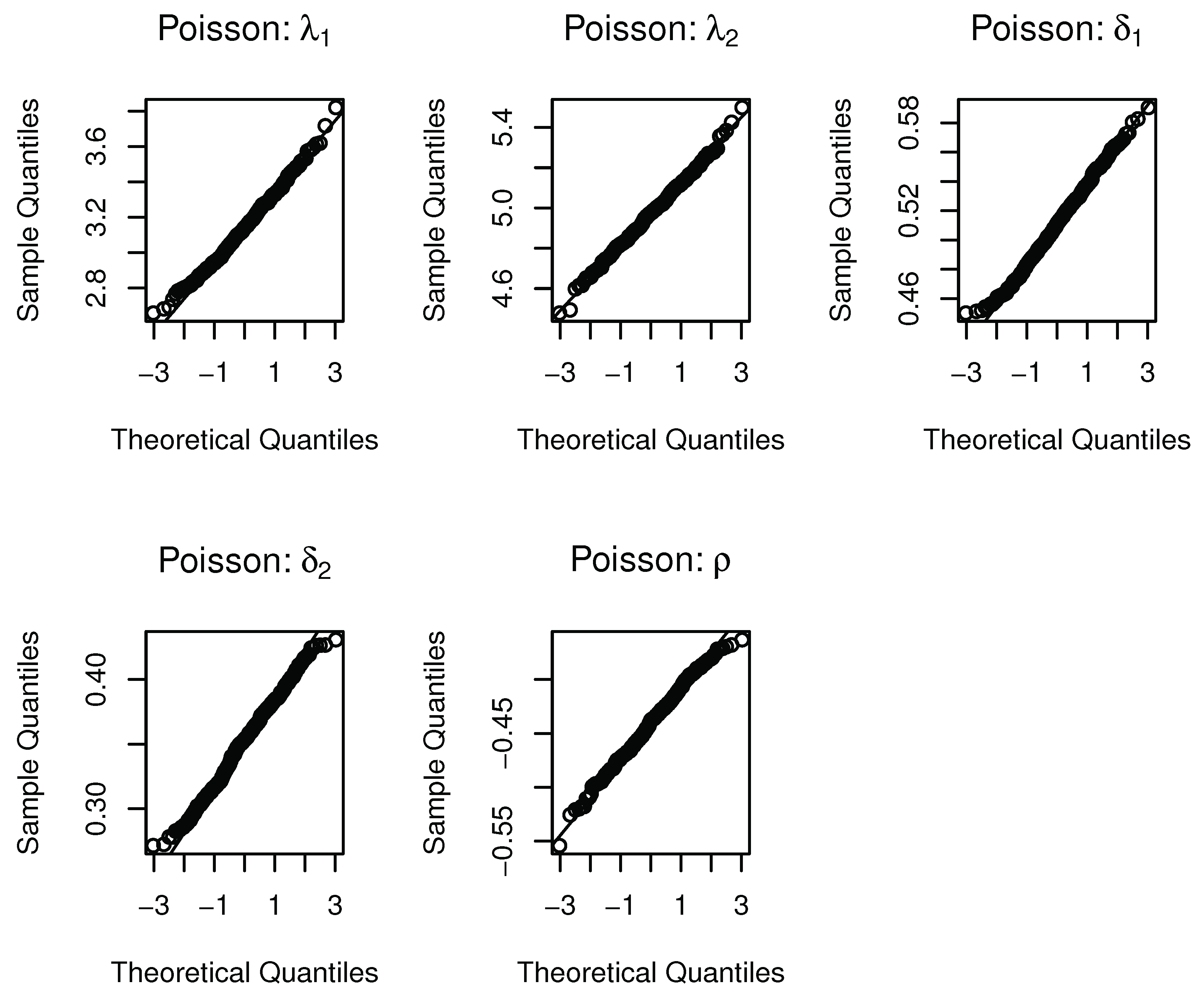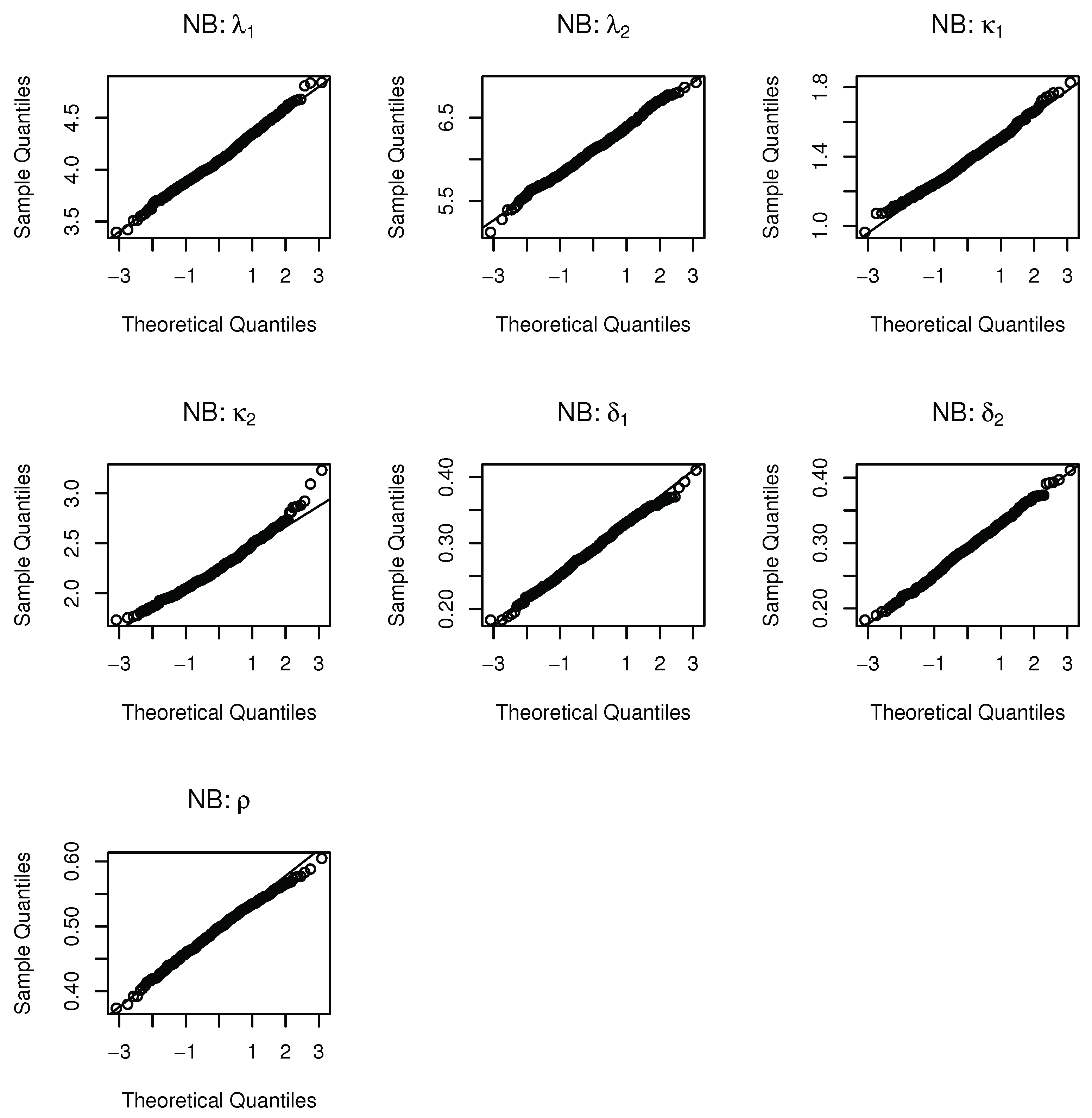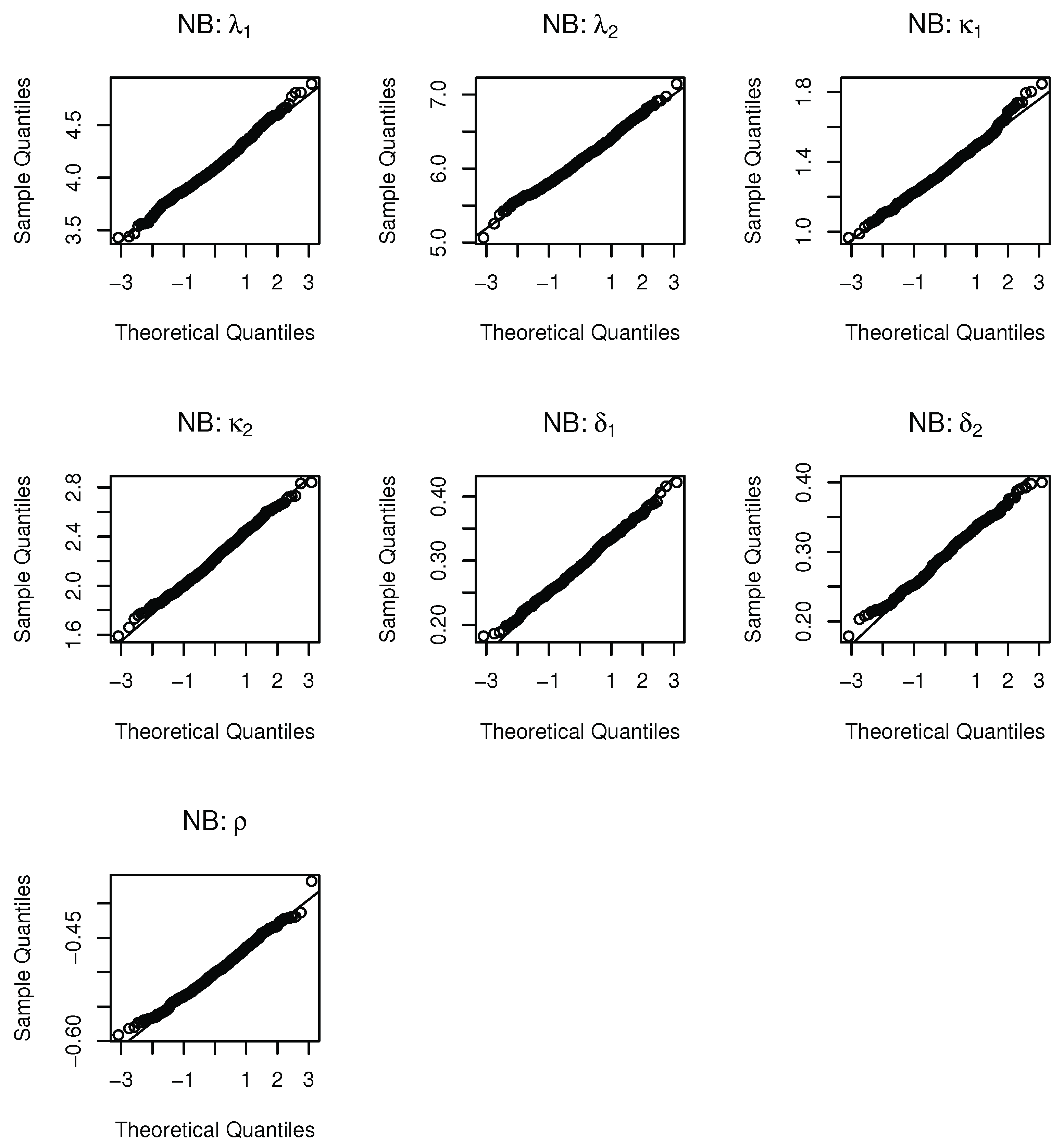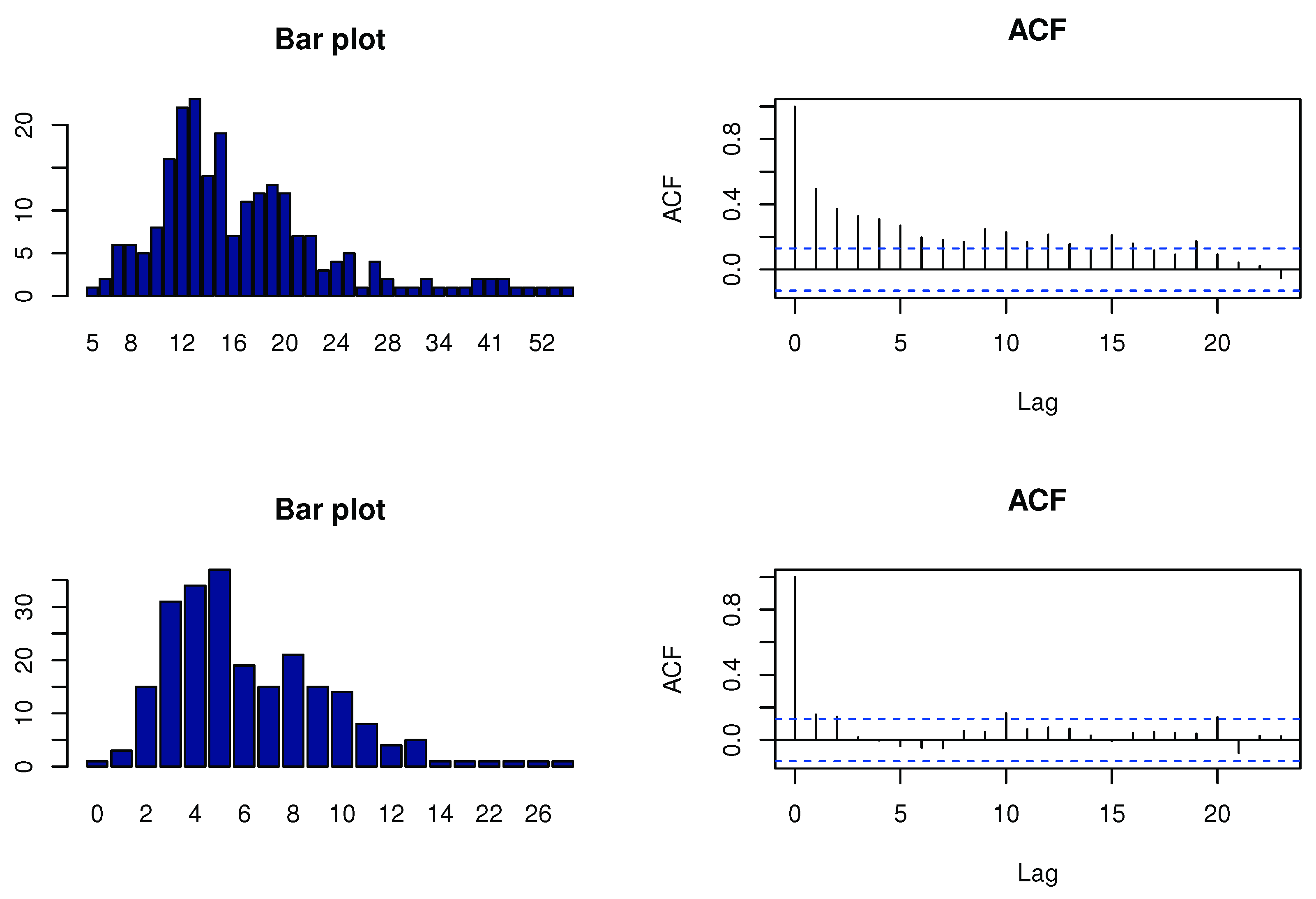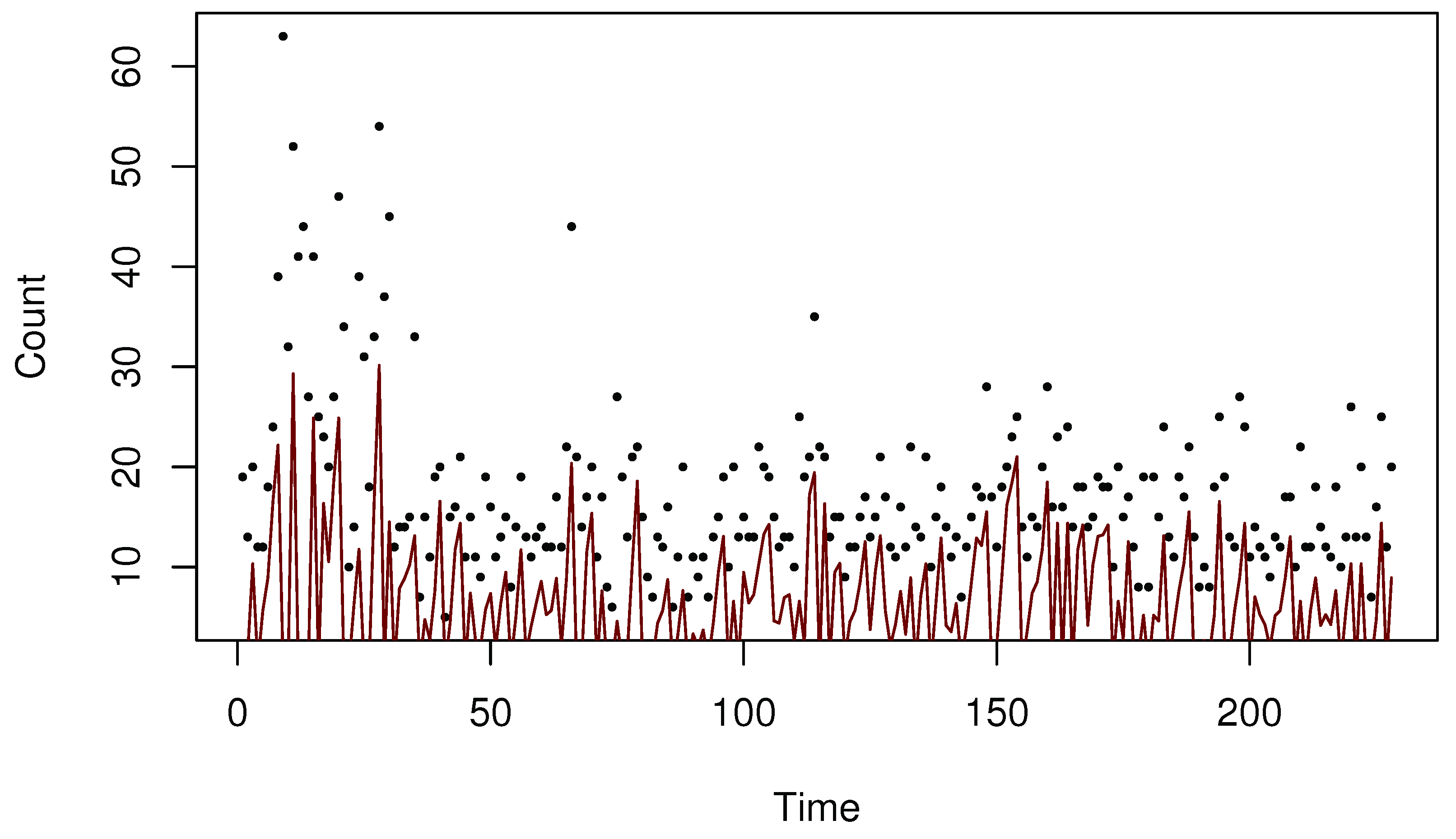Multivariate count time series frequently arise in modern statistical analysis and often exhibit dependence both within and between series. In many applications, time-series counts are observed as bivariate vectors that display serial dependence within each series, as well as cross-correlation between the two. Building on the framework of the integer-valued autoregressive moving average model (INARMA), Quoreshi [
1] proposed the bivariate integer-valued moving average model (BINMA), which accommodates both positive and negative correlations between counts. He also extended the BINMA model to a multivariate setting. Wang et al. [
2] proposed a bivariate zero-inflated Poisson model to analyze occupational injuries. Heinen and Rengifo [
3] proposed a multivariate autoregressive conditional doubly Poisson model capable of handling over-dispersion, serial dependence, and cross-correlation. The cross-correlation between the time series was modeled using a multivariate Gaussian copula, and the parameters were estimated through a two-stage procedure. The work of Karlis and Pedeli [
4] presented a bivariate integer-valued autoregressive process of order 1 (BINAR (1)) in which the cross-correlation is modeled by the use of copula to accommodate both positive and negative correlations in Poisson and Negative Binomial counts. Also, they illustrated the use of Frank and Gaussian copulas to specify the joint distribution of the innovations. Marginal time series are modeled using Poisson and Negative Binomial INAR(1) models. Ravishanker et al. [
5] applied state space models for multivariate count time series and used them to analyze a market dataset. One major advantage of copula-based methods is that they can separate the modeling of marginal and temporal dependence. Bradshaw and Blei [
6] constructed a generative model of underreported campus sexual assault data that allows the estimation of the true incidence and reporting rates. Additionally, they used the Hamiltonian Monte Carlo (HMC) sampling scheme for posterior inference regarding reporting rates and assault incidence in each school and applied this method to analyze campus sexual assault data. Cui and Zhu [
7] proposed a new bivariate Poisson INGARCH model, which allows for positive or negative cross-correlation between time series. Ahamad et al. [
8] proposed a bivariate count data regression model to capture the dependence between multiple crash outcomes that traditional independent count models fail to represent. In this approach, appropriate marginal distributions (such as Poisson or Negative Binomial) are specified for each crash count type, and a copula function is then used to link the two margins to model their joint dependence. Jeng et al. [
9] proposed a copula-based time series model to forecast COVID-19 cases and trends based on wastewater SARS-CoV-2 viral load and clinical variables. The model was developed in two stages. In the first stage, time-series methods were used to examine and characterize the marginal distributions of both the dependent and independent variables. In the second stage, copula-based marginal regression analysis was applied to model and predict the COVID-19 case trends.
Traditional bivariate Negative Binomial regression models typically assume a specific joint distribution for the dependent variables or their associated error terms. A common approach is to impose a bivariate gamma distribution on the error terms when combined in the bivariate framework. However, such assumptions may inadequately capture the underlying dependence structure between the error terms. Moreover, as noted by Xu and Hardin [
10], there is no explicit joint distribution for the error terms in this setting. This limitation motivates the need for more flexible approaches. In particular, a copula-based bivariate Negative Binomial model provides a natural extension. In this previous work (alaqawba et al. [
11]), we developed a class of copula-based models to analyze bivariate count data, where the marginal distributions were specified as Poisson and zero-inflated Poisson (ZIP). However, when analyzing count time series data, over-dispersion is often present. In this manuscript, we extend that framework by incorporating Negative Binomial marginals, which better accommodate over-dispersion. The copula-based approach enables us to model each marginal distribution appropriately while flexibly capturing the dependence between the series through the selected copula family. This flexibility allows the model to accommodate both positive and negative dependence, providing a more general and adaptable framework for analyzing bivariate count time series data.
The remainder of the paper is organized as follows.
Section 2 provides a concise overview of Poisson and Negative Binomial regression models, along with a summary of copula theory. It then introduces the proposed class of copula-based bivariate models for analyzing two dependent time series, where each series is modeled through a copula-based Markov chain and jointly linked using a bivariate copula family.
Section 3 outlines the parameter estimation procedure via Maximum Likelihood Estimation (MLE), presents the results of simulation studies, and applies the proposed methodology to a real dataset. Finally,
Section 4 concludes the paper.

